Trees to attract birds
Bird populations are in decline, but the right trees can offer food and habitats for many species.
Why attract birds?
Being woken by the dawn chorus, or hearing the haunting birdsong of dusk, is a wonderful way to connect with the natural world even in built-up areas. And watching the flurry of “small brown jobbies” going about their day-to-day business, mediating the squabbles of starlings or spotting a flash of colour from a rare visitor, are all joyous ways to pass some downtime. Numerous studies have shown the many benefits to people’s wellbeing that contact with nature provides, so it makes sense when planning for residential or public landscapes – and SANGs – to aim for the maximum number (and variety) of avian friends in any green space.
In addition to the human benefits, birds also add to the health of a landscape. Evidence suggests that a substantial bird population leads to fewer pesky (and peckish!) plant-ravaging invertebrates such as snails and aphids. They can also help with maintenance, since several weeds are food sources for sparrows and finches. Birds are also pollinators – helping to spread seeds, which is a boon to your own and the wider environment.
Trees are one of the best ways to bring birds into a landscape, and now is a great time to plant them, as bare-root (BR) and root-ball (RB) season comes to a close at the end of March. You can explore Greenwood’s exceptional tree offering here – but first, read on to find out why trees are so necessary for our feathered friends.
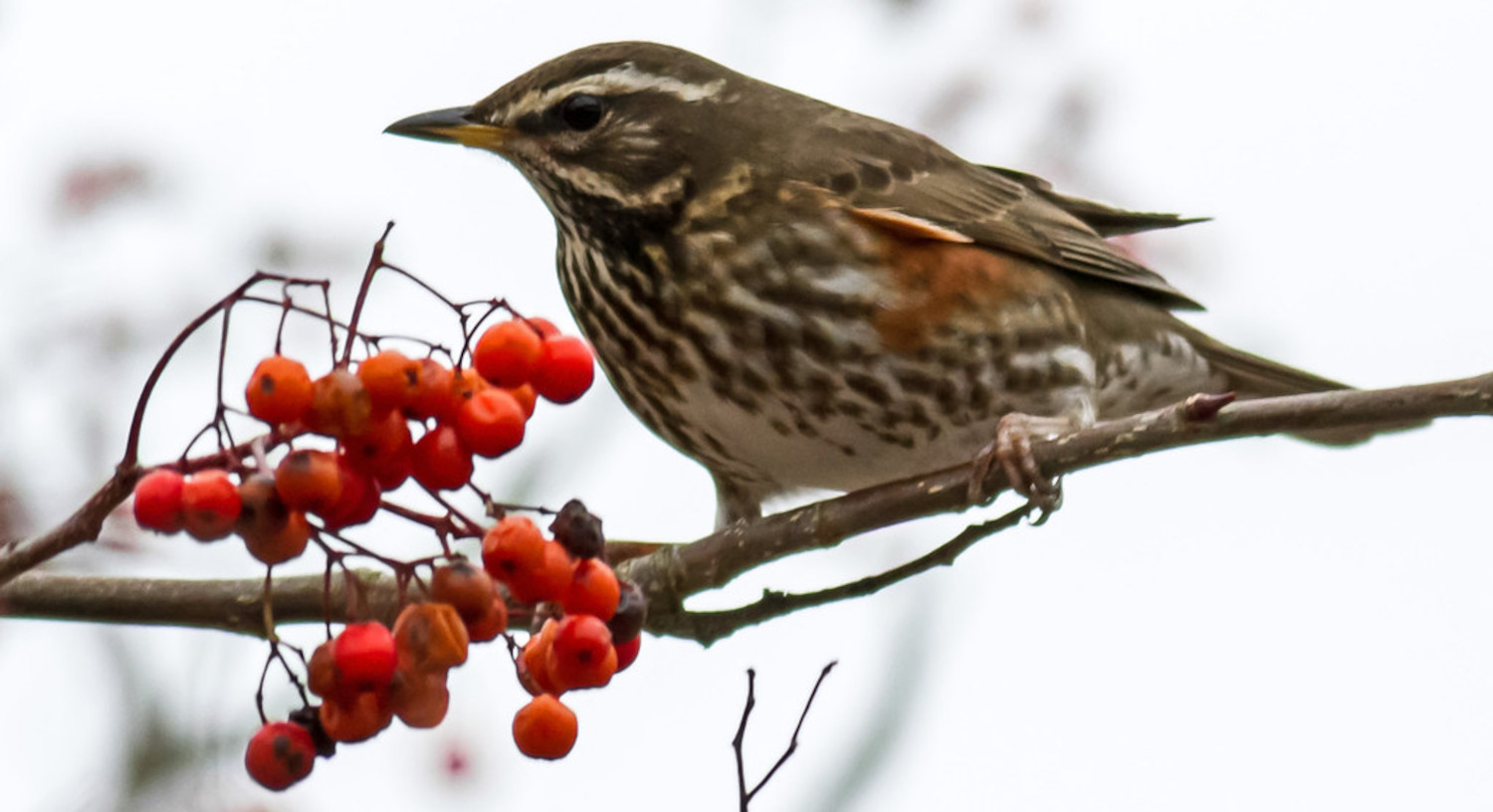
Berries are an important food source for birds like redwings, the UK’s smallest thrush.

Tree crevices make wonderful nesting – or feeding – sites for birds like this starling.
What do trees provide for birds?
Trees work hard for birds. Branches and trunk cavities make great nesting spots, while their foliage provides protection from predators and inclement weather – in the latter case often collecting rainwater to drink at the same time! Then there’s the bounty of food trees bestow – from the obvious sources such as nuts, berries and other fruits, to sap, nectar and the insect life harboured in the bark and on the leaves.
Deciduous and coniferous trees are both helpful friends to birds. Many broad-leafed trees yield fruit, and their leaf litter is a source of sustenance for ground-feeding birds, who will grub up all sorts of tasty bugs sheltering within. Evergreen trees provide essential winter shelter
Canny selection of trees is important to create a bird-friendly environment – make sure the varieties you choose are suitable for your project’s space, climate and soil. A mixture of evergreen, broad-leaf and fruit trees in a range of sizes, will bring the most benefit to birds, but also to human residents and visitors, who will be able to enjoy a landscape full of various textures and colours.
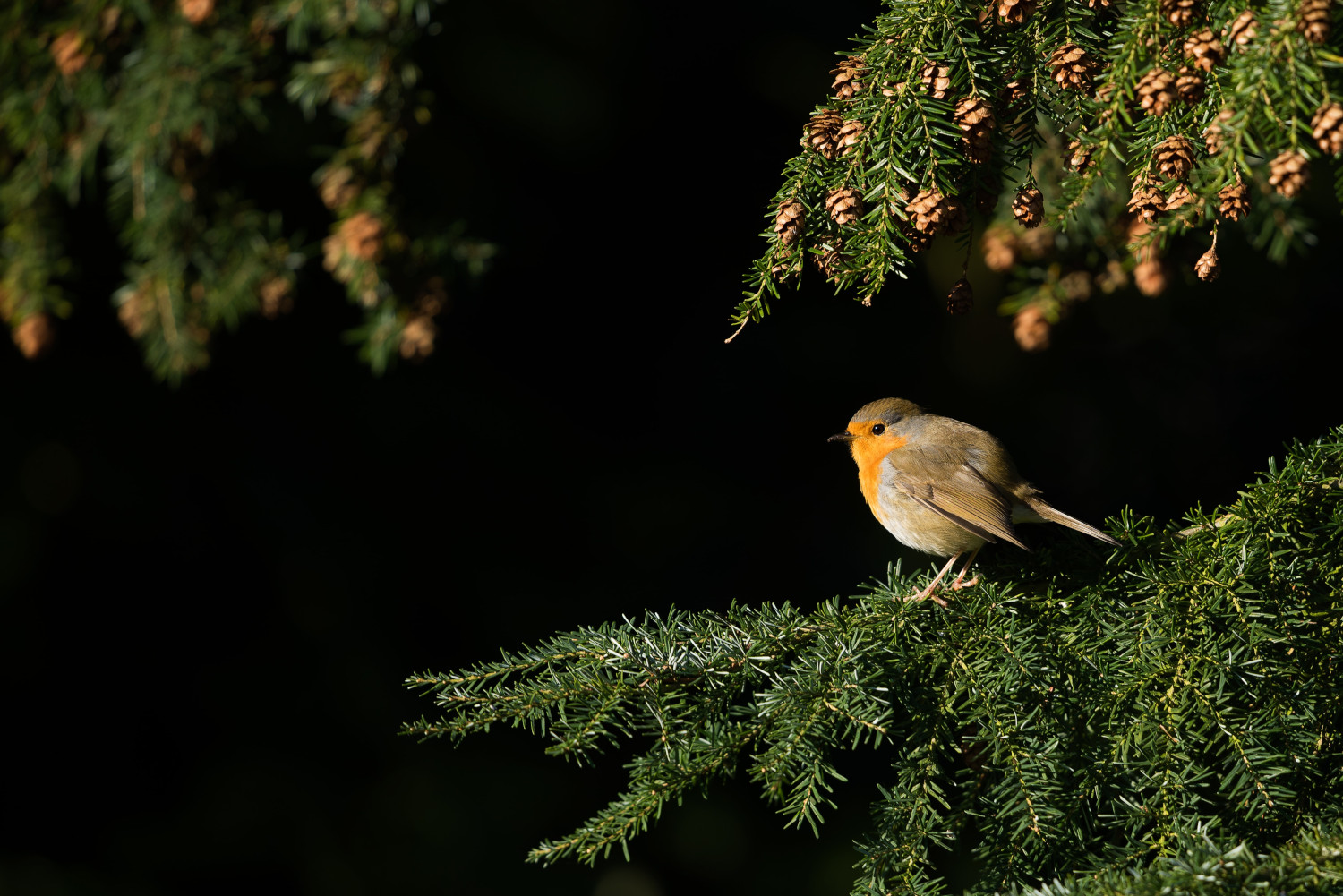
Conifers not only maintain interest in a landscape year-round, but also provide vital shelter for bird life. Photo by Vincent van Zalinge on Unsplash
Which trees attract birds?
The best value trees, bird-wise, will offer both food (directly or via supporting insects, preferably both) and shelter. These trees will attract multiple species of bird. Equally, lifespan should be taken into consideration, since longevity creates a more entrenched and secure ecosystem.
Birds benefit particularly from mixed planting – perhaps more than any other species – so a range of trees is likely to increase the number and types of birds that visit, or set up nest in, a landscape. Look, too, for trees which offer benefits in each season (often to different species). Below are some suggestions for making your landscape a tree-haven for avian life.
Betula pendula
Silver birch adds elegance and colour to any landscape, with the added bonus of being a bird’s best friend. Tits, greenfinches and redpolls gorge on its catkins, while woodpeckers make their homes in its trunk. The lesser spotted woodpecker and the willow tit are both red-listed species, so the silver birch will also do its bit for conservation.
Betula pendula has a delightfully airy canopy, allowing light to filter through, creating a perfect shady picnic spot, but also a habitat for plants to thrive in. It also provides food for a whopping 512 species of invertebrates – 112 of which are exclusive to Betula pendula.
Silver birch is relatively easy to establish, and bare-root whips grow quickly. There are also many varieties, so there is one to suit most landscapes. In smaller spaces, for instance, compact varieties such as Young’s weeping birch (Betula pendula subsp. pendula ‘Youngii’) and the pyramid birch (Betula pendula subsp. pendula Fastigiata Joes) will work well.
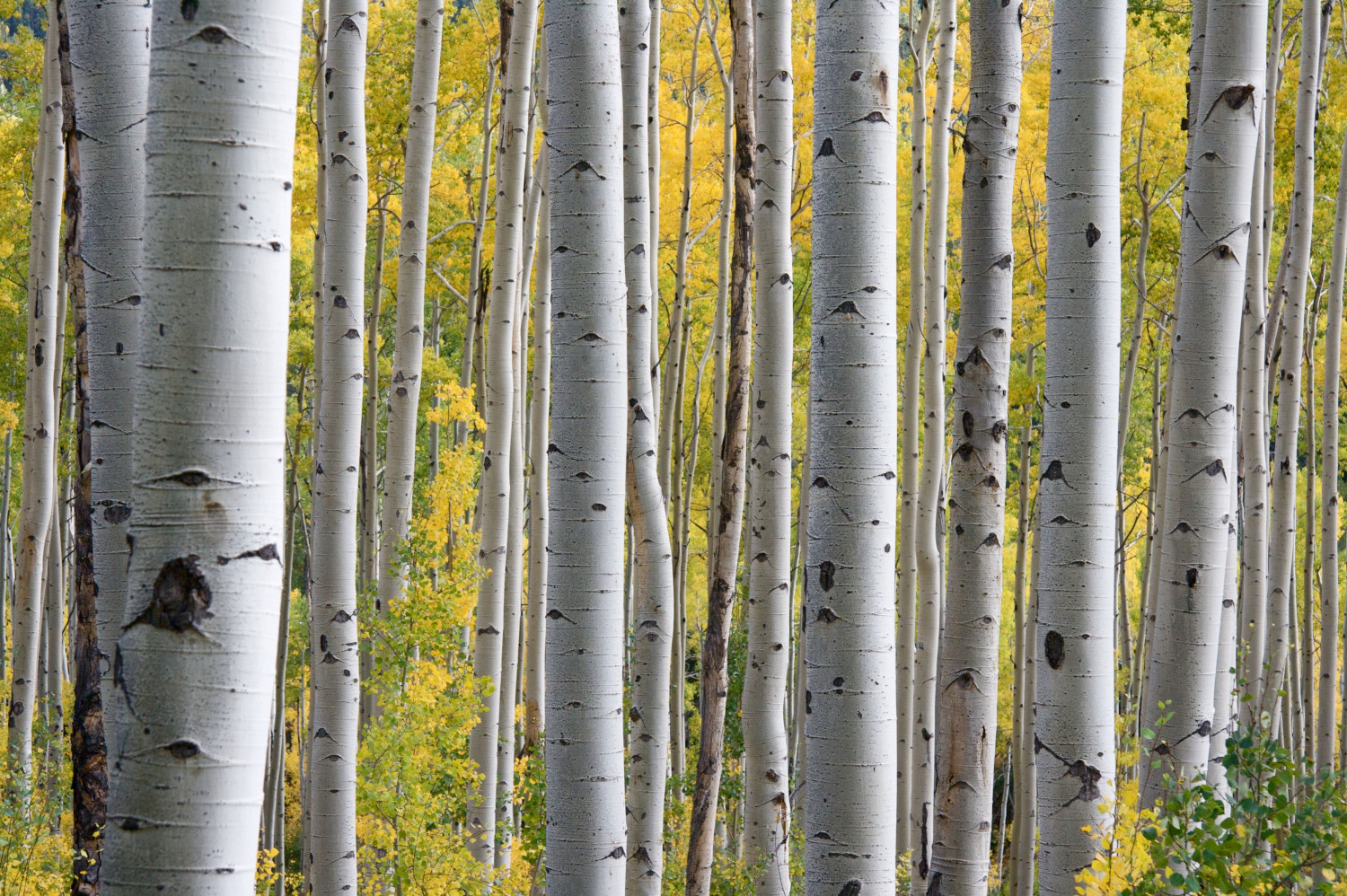
Silver birch stems are as attractive to woodpeckers as they are aesthetically. Photo by John Price on Unsplash
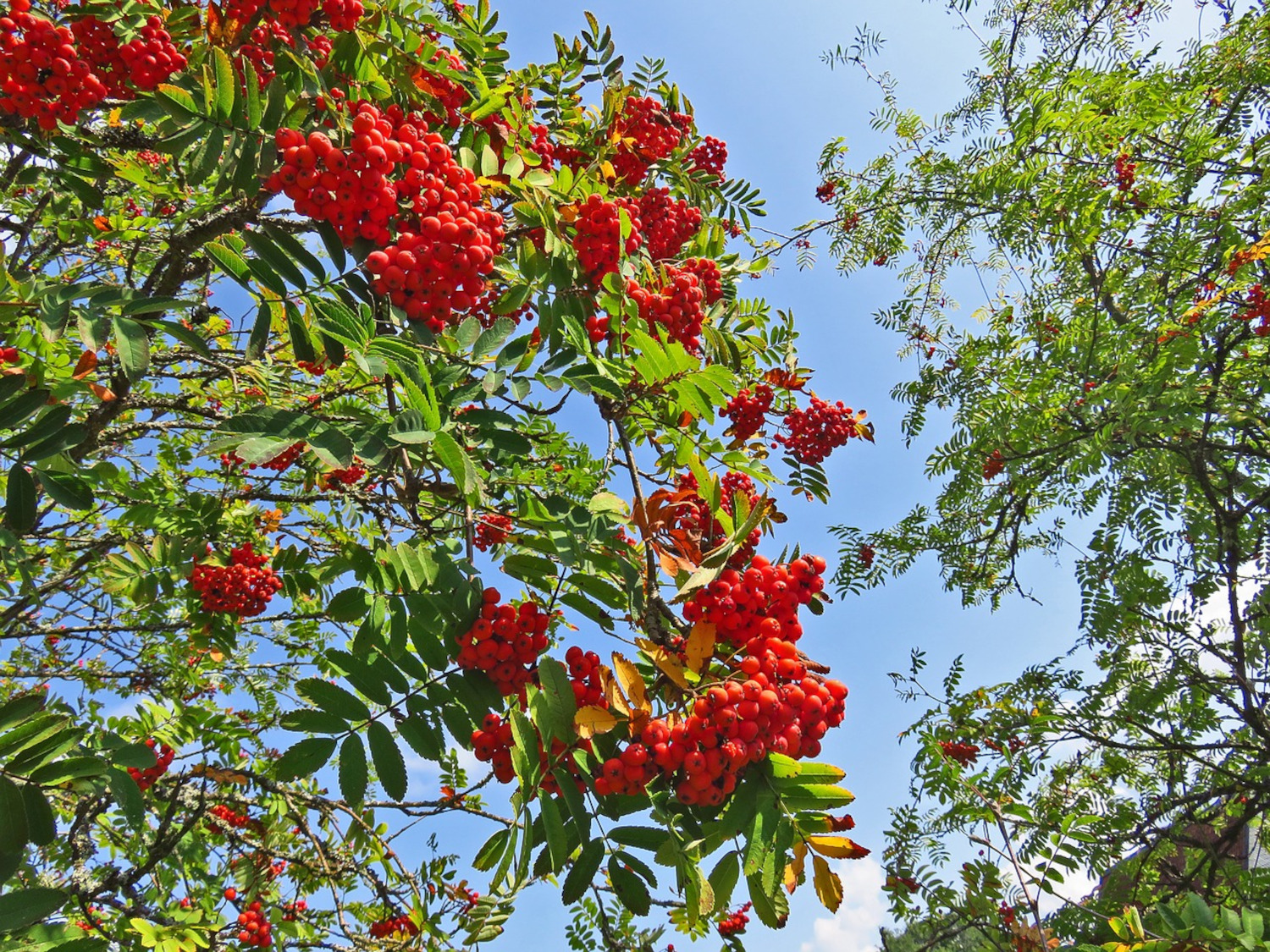
A beautiful display of bird-friendly berries making a bright contrast against the rowan’s striking foliage.
Sorbus acuparia
The berries of mountain ash (so-called for its ability to thrive in high altitudes) are so attractive to birds that they were used as a lure to capture them in the middle ages. Rowan berries provide vital autumn sustenance for redstarts, starlings, fieldfares, blackbirds and other species.
Recently fledged chicks will also feast on the berries, alongside the aphids and sawflies that feed on rowan trees. Make sure the Sorbus aucuparia variety you select bears red berries, since these are the preferred choice for gastronomes of the bird world!
Mountain ash also makes for a delightful ornamental tree in a landscape. Its attractive pinnate leaves turn glorious shades of orange and yellow in autumn, while spring brings blossoms of creamy white.
Ilex aquifolium
Hardy and tolerant of most soils, Ilex aquafolium (holly) can be grown as a shrub or a tree, providing a long season of berries particularly beloved of mistle thrushes, who will be vigilant sentries over their haul. Many trees bear fruit in summer, but holly sustains birds in leaner autumn and winter. The small white flowers of spring and summer attract many insects – another food source for birds. It is also the food plant for first generation holly blue butterflies in spring.
Holly provides colour year-round, and some varieties have particularly attractive foliage, such as holly ‘Golden King’ (Ilex × altaclerensis ‘Golden King’), with yellow-edged leaves in all seasons. Whilst renowned for its spikes, holly gives birds much needed protection in the winter.
Crataegus laevigata and Crataegus monogyna
Crataegus laevigata and Crataegus monogyna are both native to the UK, known as English and common hawthorn respectively. Common hawthorn not only attracts thrushes, starlings and finches to eat its autumn haws, but other wildlife too – dormice and bees both benefit from its flowers.
Hawthorn foliage creates dense thickets which make wonderful habitats and shelter for a variety of bird species. There are also some beautiful cultivars which lend colour and elegance to any landscape. Try Crataegus laevigata ‘Paul’s Scarlet’, a delightful variety with glossy leaves and dainty red flowers in spring, or frosted thorn (Crataegus persimilis ‘Prunifolia Splendens’) which will be covered in fragrant white blooms come May.
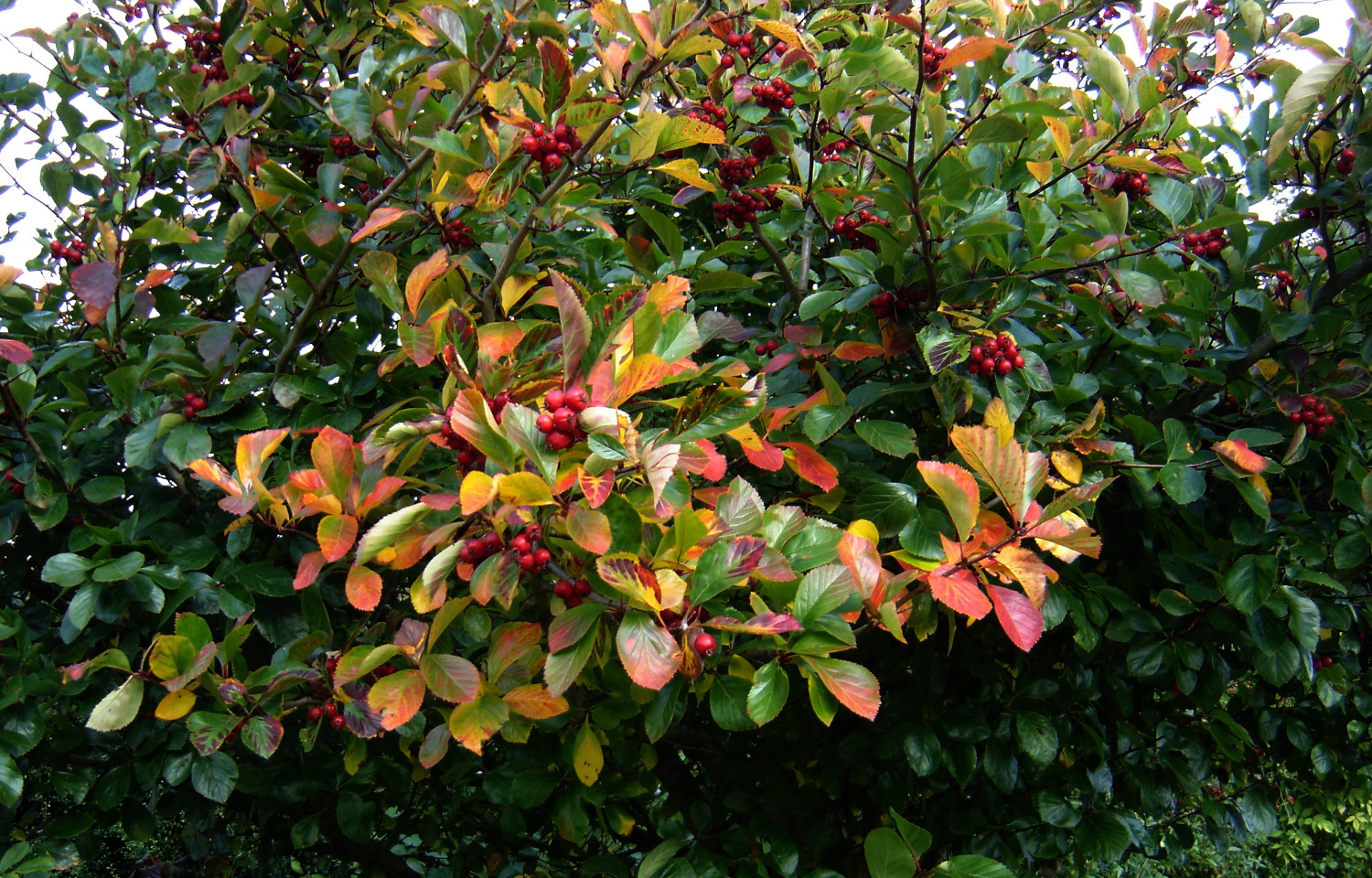
Crataegus persimilis ‘Prunifolia Splendens’, an ornamental hawthorn variety.
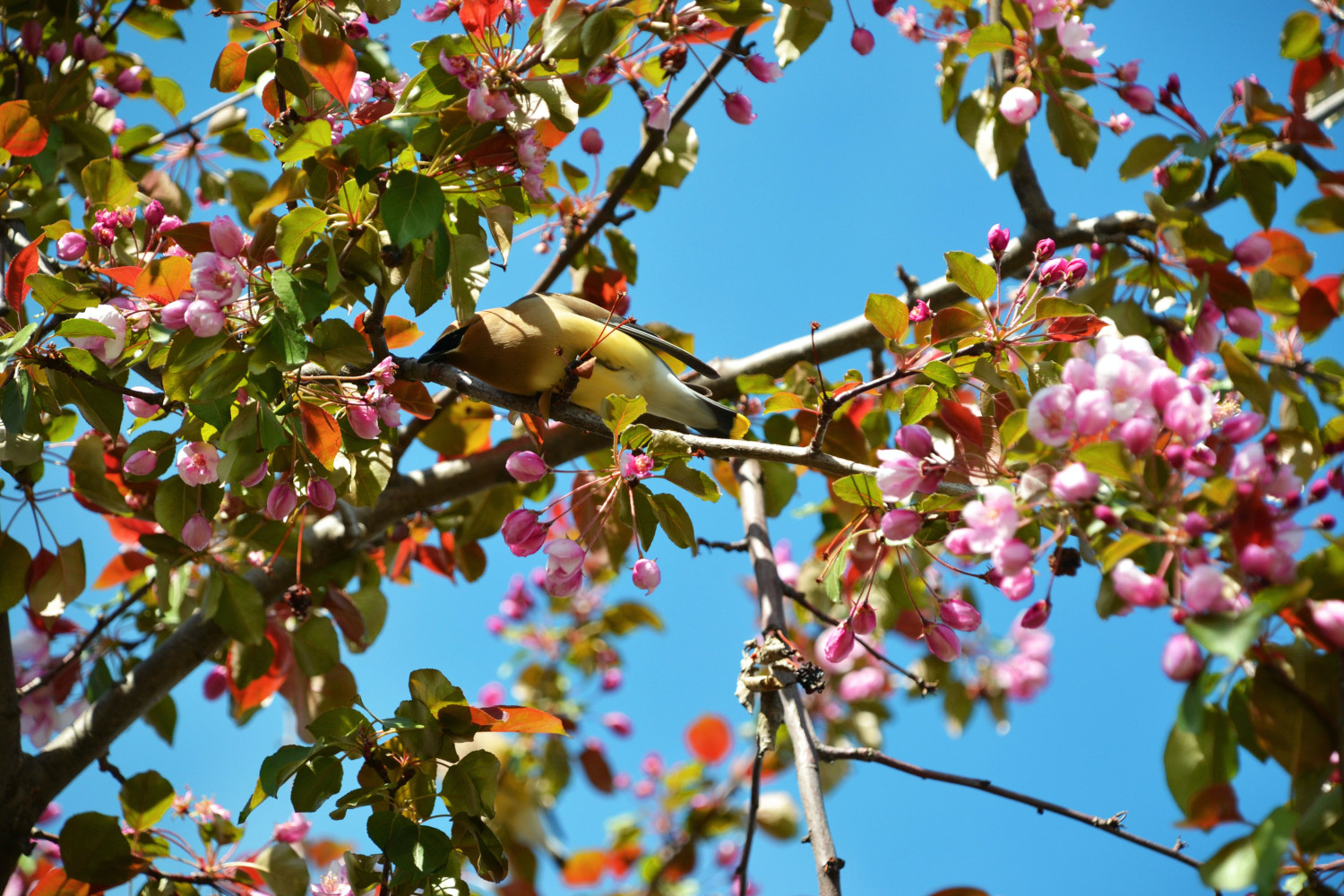
A greenfinch perched delicately on the branches of a blossom-adorned crab apple tree. Photo by Chelsey Faucher on Unsplash
Malus sylvestris
Crab apple trees are havens for all kinds of wildlife, including birds, who gorge on its autumn fruit. Native to the UK, there are many wonderful varieties to choose from, including purple-leaved trees such as Malus ‘Royalty’, which contrast wonderfully with the greens of other trees (and is compact enough for even small landscapes).
Besides attracting greenfinches, thrushes, robins and starlings, crab apples create visual delight with their pink or white spring blossom.
What else can be done to make a landscape bird-friendly?
There are, of course, many other great trees for bird life. The seeds of pine and larch, for instance, are a vital lifeline for many species. But trees are only one aspect of a landscape designed to help and welcome bird life. Birds require a complete habitat, comprising food, nesting areas, shelter and even singing posts. Since they get their sustenance from a variety of sources – fruit, seeds, buds, flowers, nectar – it’s worth choosing a variety of plants that between them cover all these bases, across the seasons. Planting in groups, or drifts, aids cross-pollination, promotes higher fruit yields, and makes it easier for migrating birds to spot ripening fruits.
Shrubs and hedges are the preferred nesting sites for some species, and others will shelter in climbing plants like vines. Even ground cover is useful for yielding nesting materials. Variety is again a boon for birds. In general, native plants are the most beneficial, tending to meet the requirements of native birds – as one might suppose. Using native plants for landscapes creates welcoming habitats and natural corridors through bird ranges – especially those species in decline due to development.
For advice on selecting trees for your landscape, you can contact the G-Team, who will be delighted to impart their hard-earned knowledge. The RSPB have more tips for welcoming birds to your environment, too. If you’ve been inspired by the suggestions here, you can head straight to the Tender Tool to discover the range of tree varieties and sizes on offer.

